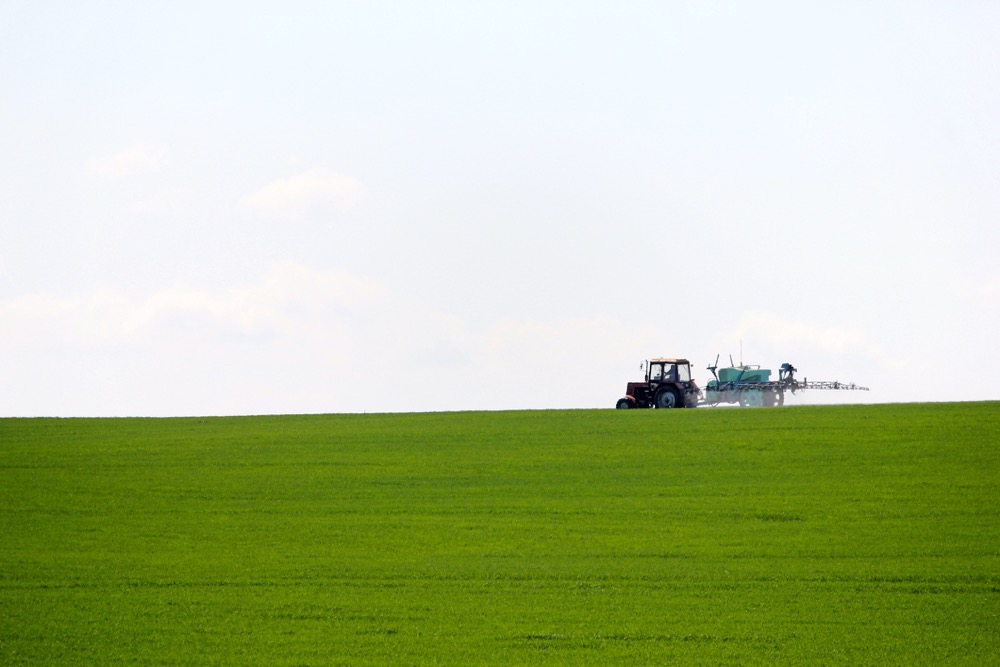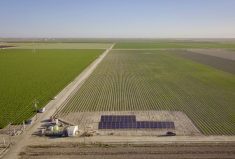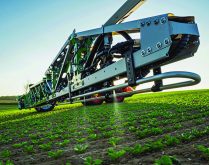As farmers, we have a question to ask ourselves. Are we getting played? Are we getting taken in, just like an audience at a magic show that gets fooled into watching the distraction instead of what’s really happening? Is agriculture reacting to the GMO debate when we should be focusing on protecting glyphosate?
These are questions we need to ask urgently. Here’s why.
Earlier this summer, I received four very disturbing emails from the online activist network Avaaz.
If you haven’t heard of Avaaz, do yourself a favour and go to its website today. The prestigious Guardian newspaper now says Avaaz (whose name means “voice” in several European languages) is the world’s most powerful online network of environmental activists.
Read Also

Building a farm legacy that outlasts you
A farm’s legacy isn’t just about the land; it’s also about the values and the impact that continue long after the current owner has stepped away.
In just five years, Avaaz has amassed a membership of almost 44 million people, and it is still growing, with thousands of dedicated volunteers overseen by core teams on six continents.
These emails didn’t pull any punches. They outright told Avaaz members to push for a ban on glyphosate.
We mustn’t take this lightly. The Avaaz website shows that of all their global issues, their third-highest priority is to “Break Monsanto’s Grip — investigate, expose, and take on the corporate capture of our food and agriculture regulatory systems to ensure our health and the environment are put before profits.”
If you think third isn’t so bad, take a look at the company it keeps. The survey found 53.55 per cent of Avaaz members consider glyphosate a priority, only behind “Save the Seas” at 54.91 per cent, and the 53.74 per cent scored for “Drive the Paris Climate Agreement Home.”
Nor is there any question that the pressure Avaaz is putting on governments to ban glyphosate is having an effect. In June, when the European Union decided against renewing glyphosate’s licence for another 15-year term, as normally happens with pesticide license renewals, but instead only granted an 18-month “emergency exemption” for further scientific study of the 40-year-old herbicide, Ricken Patel, Avaaz executive director wrote to his members to claim credit: “Now, after over two million of us ran 20 campaigns, with millions of signatures, messages, phone calls, stunts, advocacy meetings and media stories… the future of the ‘Monsanto model’ is actually in question!!”
But here’s the clincher, with a quote from Pavel Poc, vice-chair of the EU Parliament’s environment committee: “Avaaz is indisputably the driving force of the fight for glyphosate discontinuance.”
The risk in perspective
Aside from its distrust of Monsanto, it seems Avaaz opposes glyphosate because of its supposed toxicity.
From a farmer’s perspective, there is no question that there is a degree of toxicity to glyphosate. It is a herbicide after all. However, multiple studies by many reputable institutions rate glyphosate as only slightly toxic. The LD50 of glyphosate is 5,600 mg/kg. For comparison, the LD50 of baking soda is 4,220, and table salt is 3,000, both falling in the moderate toxicity range. Copper sulfate, a chemical used by organic growers as a fungicide, is rated as very toxic with a LD50 of just 300. And vitamin D is actually rated as extremely toxic with an LD50 of just 10 mg/kg. Yet people still purchase and ingest vitamin D supplements.
The toxicity concerns about glyphosate spiked last year when the International Agency for Research on Cancer designated glyphosate as a 2A carcinogen (i.e. probably carcinogenic to humans). IARC is the only global body to give glyphosate this rating. The U.S. Environmental Protection Agency considers glyphosate to be non-carcinogenetic in humans. Even the European Food Safety Agency decided that glyphosate is unlikely to pose a carcinogenic hazard to humans.
It is interesting to note what else is found in IARC’s group 2A, including high-temperature frying, red meat, very hot beverages, and indoor emissions from combustion of wood (fireplaces).
IARC rates shift work too as probably carcinogenic.
This contrasts to Group 1 substances which IARC defines as carcinogenic. This list includes asbestos, estrogen therapy, ethanol (alcoholic beverages), solar radiation, diesel engine exhaust, smoking tobacco, and second-hand tobacco smoke.
The point is that lots of products in modern society can potentially cause cancer. It is not simply exposure to a product; it is the amount of exposure or dose which causes the problem. It is unjustified to ban glyphosate based on just three studies that have suggested there may be a link between this herbicide and cancer when hundreds of studies have found no link.
If prevention of cancer is the prime motivation, there are substances that have a much higher, proven risk and which should be banned long before glyphosate. Yet society knowingly accepts the risks of activities like smoking and drinking alcohol without calling for a ban on these practices.
“Atrocity against nature”
What disturbs me most about the Avaaz emails are the inflammatory statements that can be extremely misleading. For example in his June 13, 2016 email, Patel wrote: “Glyphosate kills *everything* except Monsanto’s genetically engineered crops, transforming our planet into ecological wastelands where nothing can live but one GM crop. It’s apocalyptic.”
In the June 9 email Patel states: “We can also use the next 18 months to focus scrutiny on the global environmental impact of the Monsanto model, which is turning the surface of our planet into strange, toxic ‘biodeserts’ where only one genetically modified Monsanto crop can grow.”
Then, on June 21, I received an email from Alice Jay, Avaaz campaign director, in which she said: “Our planet is one tremendously fragile, interdependent ecosystem, and Monsanto’s wasteland agriculture is taking a wrecking ball to it.”
To rally her troops, she then added, “We are the front lines of our people’s response to this atrocity against nature, and our future.”
For anyone not familiar with agriculture, statements such as these make glyphosate sound like the most toxic substance known to man. Descriptions that say it kills everything, creates ecological wastelands and toxic biodeserts… are all factually incorrect yet seem credible to a gullible public.
Statements like these do nothing to inform people about glyphosate or GM crops but are simply used to mobilize an uninformed public. Reading the emails I am not even sure if the authors are more against GM crops, glyphosate, or Monsanto. A reader likely comes away equating all three as the same thing.
Worse yet, the emails ignore all of the benefits of glyphosate. They do not tell the readers how this herbicide has enabled farmers to reduce the use of much more toxic pesticides. They do not explain that glyphosate enables farmers to adopt conservation and zero tillage — reducing soil erosion and soil degradation. They do not mention how glyphosate facilitates continuous cropping thereby increasing CO2 sequestration, or how it has paved the way for massive reductions in fuel used by farmers, thereby slowing climate change. They do not mention that even organic farmers use this herbicide.
Nor do they tell their members that a ban on glyphosate would likely reduce global food stocks and result in higher food prices.
Avaaz battle plan
On June 21, Avaaz outlined its strategy for killing glyphosate. In its own words, it lists five needs for which it was soliciting funds:
- Fund the independent science that is desperately needed to counter the industry-funded studies.
- Build pressure on key countries and politicians to stand strong on glyphosate.
- Articulate the clear, sustainable alternatives to glyphosate-type herbicides (this is key to winning over farmers and politicians).
- Mobilize rapidly for every committee, every council meeting, every backroom bureaucratic process where the EU tries to get out of making a clear decision.
- Start taking this fight global. The U.S., Canada, Brazil and a slew of other countries could decide soon whether they also ban glyphosate.
Every one of these steps should alarm Canadian farmers.
I really wanted more information on each of these points. I especially wanted to know what would be Avaaz’s position if an independent study they funded found glyphosate to be safe and beneficial. I wanted to know what would make their independent study more credible than independent studies which have already been completed and have found glyphosate to be a relatively safe pesticide. Would they reverse their position? It does not appear so, given the other four steps on their list.
I also wanted to know what are the “clear, sustainable alternatives to glyphosate-type herbicides” that they feel will win over farmers. If these alternatives are so good, why not just publicize them, so farmers could flock to them.
So I tried multiple times over 25 days to contact Avaaz by both email and telephone. Finally I had a call returned by someone who could only speak limited English but agreed to reply to emailed questions. I emailed my questions but I never received the promised reply.
As a writer I am extremely frustrated by an organization that provides multiple media contacts but then does not reply to media queries.
As a farmer I am angered by an organization that blatantly distorts the facts and intentionally misleads the public into thinking farmers are using products which endanger not only the environment but also the consumers of the food we grow.
Farmers are continually told we need to connect with consumers. We are told to explain to the public what we do and why we do it, and we are told to demonstrate that we are producing safe, nutritious and healthy food.
I agree there is a real benefit to these one-on-one conversations between farmers and consumers. However, individual farmers cannot refute the attacks that groups like Avaaz are waging on modern agriculture.
Individual farmers cannot reach the millions of consumers Avaaz does in a single email blast.
Even worse, there is nothing individual farmers can say or do to change the mindset of Avaaz members who have been continually bombarded with propaganda that links glyphosate to “toxic biodeserts.”
Governments, industry, and farm organizations must hold Avaaz accountable for what it is saying. Agriculture needs to demand Avaaz provide proof of such statements as “…where only one genetically modified Monsanto crop can grow.”
We also need to showcase farmers (including organic farmers) who have never planted a Monsanto GM crop but who use glyphosate on their farms without the “apocalyptic” effects that Avaaz claims glyphosate leads to!
Scientists too must stand up and defend their work against such anti-science propaganda. On June 20, 2016, a total of 107 Nobel laureates signed a letter supporting GMOs. (The letter and information about GMOs can be found on the group’s website at supportprecisionagriculture.org.)
Hopefully, the stand this brave group is taking against the mob of the misinformed will encourage governments and agriculture to collectively stand up for the science that is necessary to feed the growing world population!
















